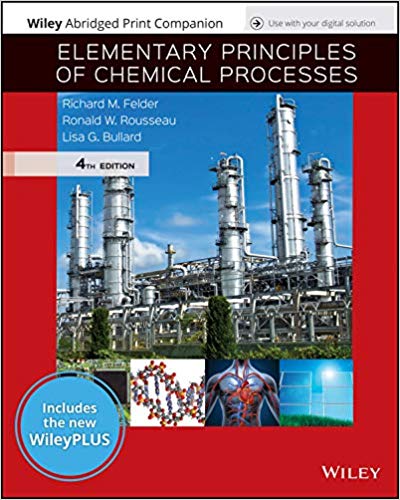Various amino acids have utility as food additives and in medical applications. They are often synthesized by
Question:
Various amino acids have utility as food additives and in medical applications. They are often synthesized by fermentation using a specific microorganism to convert a substrate (e.g., a sugar) into the desired product. Small quantities of other species also may be formed and must be removed to meet product specifications. For example, isoleucine (Ile), which has a molecular weight of 131.2, is an essential amino acid16 produced by fermentation, and other amino acids such as leucine and valine also are found in the fermentation broth. The broth is subjected to several processing steps to remove these and other impurities, but final processing by crystallization is required to meet stringent specifications on purity. The strategy is to crystallize the hydrated acid form of Ile (Ile•HCl•H2O), whose crystals exclude other amino acids, and then to redissolve, neutralize, and crystallize the final Ile product.
In a batch process designed to manufacture 2500 kg of Ile per batch, an aqueous feed solution containing 35 g Ile/dL and much lower concentrations of leucine and valine is fed to the final purification stages. The pH of the solution is 1.1 and its specific gravity is 1.02. The solution is heated to 60°C and 35-wt% HCl solution is added in a ratio of 0.4 kg per kg of feed. The addition of HCl causes the formation of crystals of Ile•HCl•H2O, and the production of these crystals is further increased by slowly lowering the temperature to 20°C. At the final crystallizer conditions the Ile solubility is 5 g Ile/100 g solution. The resulting slurry is sent to a centrifuge where the crystals are separated from the liquid solution and the crystal cake is washed with water. The solids leaving the centrifuge contain 12% free water (i.e., not part of the crystal structure) and 88% pure crystals of Ile•HCl•H2O.
The washed crystals are redissolved in water to form a solution that is 4.0 g Ile/dL with a specific gravity of 1.1. The solution is sent to an ion exchange unit where HCl is removed. Upon leaving the ion exchange unit the solution has a pH of about 5.5. It is sent to a second crystallizer where the temperature is gradually reduced to 10°C and the Ile solubility is 3.4 g Ile/100 g H2O. The crystals are separated from the slurry by centrifugation, washed with pure water, and sent to a dryer for final processing.
(a) Construct a labeled flowchart for the process.
(b) Choosing a basis of 1 kg of feed solution, estimate (i) the mass of HCl solution added to the system, (ii) the water added to redissolve the Ile•HCl•H2O crystals, (iii) the mass of HCl removed in the ion exchange unit, and (iv) the mass of final Ile product.
(c) Scale the quantities calculated in Part (b) to the production rate of 2500 kg Ile/batch.
(d) Estimate the active volume (in liters) of each of the crystallizers.
Step by Step Answer:

Elementary Principles of Chemical Processes
ISBN: 978-1119498759
4th edition
Authors: Richard M. Felder, Ronald W. Rousseau, Lisa G. Bullard





